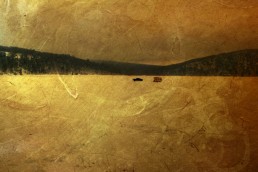The Ultimate in Fly Tying
SHARE THIS POST
I am getting ready to try out some new fly patterns, a streamer I created for our kids in Missouri. A few weeks ago I gave a short presentation at Troutfest, in Winneconne, Wis. My workshop was on creating your own recipes that can catch fish on a regular basis.
As one advances in the art of fly tying and becomes proficient with standard patterns, the urge to create your own recipes becomes almost overpowering. It’s a fun thing to do, and when you actually catch fish on one of your own, that is the ultimate high.
I have several flies I am proud of. I designed a couple of them decades ago and what’s important here is that they still catch fish on a consistent basis. My own “Rapids Nymph” and my “Squirrel-tail Streamer” both were the result of extensive hands-on stream research. Both originated as trout flies and then evolved into panfish and bass lures, but they still catch the trout. I expect to catch fish every time I tie one to my tippet, but like many, they’re not always what the fish want every time.
About eight years ago I tied what I call the “Perch,” because it resembles the fish; I tied it for pike. But so far it has not caught a single pike but the smallmouths love it. Sometimes we do things for one reason and they work for something else, but who am I to complain?
Are you enjoying this post?
You can be among the first to get the latest info on where to go, what to use and how to use it!
As mentioned, I’ve tied a fly for our kids. I have dubbed it “The Missouri Shad.” It looks so good I believe I’ll be using it for Wisconsin fish as well. I created this lure because the kids told me that the white bass in Missouri were chasing shad near their pier and they could not get them to hit any of their lures. I did research and found out more about the shad that live in the Lake of the Ozarks. I found some photos and sat down at the tying bench.
After several experimental ties, here is the recipe I ended up with:
- Hook: 1/0 Mustad-Aberdeen streamer
- Thread: Black, 6/0 UNI-thread
- Body: Flat, medium silver tinsel
- Overbody: White rabbit hair strip
- Sides: Six to 8 strands of silver Krystal Flash on each side
- Underwing: White bucktail
- Overwing: White, medium/dark blue and black bucktail. The blue and black together equal amount of the white.
To tie this streamer, wind the thread from the eye back to the bend of the hook. Tie on the tinsel, wrap the thread forward to near the eye and then wind the tinsel, edge to edge, up to the thread. Add a strip of white rabbit hair, about 1/2 inch, beyond the bend of the hook to help bulk up the body and gives it some substance to mimic the profile of a shad. I am tying this well back from the eye, about the length of three eyes back. Also, we have a lot of material to add here so we don’t want to crowd the front and end up with no space for the head. Next, to add flash, tie on six strands of silver Krystal Flash on each side of the underwing; use the rabbit hair to separate them. These should be as long as the rabbit fur. Add the underwing of white bucktail. If it helps, remove the hook and put it back in the vise upside down. The underwing should only be as long as the bend in the hook. Finally, add the top wing consisting of three layers of bucktail: white, dark blue and black. Tie the hair on one color at a time, making the white bucktail as thick as the combination of the blue and black. Trim each layer of hair on an angle so you have a nice taper to the eye. You can finish the fly with a neat head using whip finish and lacquer. “The Missouri Shad” is complete.
Again, this lure looks good enough for me to try for steelhead up here as they enter from Lake Michigan and then go into its tributaries to spawn. I will give you a report on what I find. I also can give a presentation of the making of this lure to any group that you may belong to.
MWO
SHARE THIS POST
Did you enjoy this post?
You can be among the first to get the latest info on where to go, what to use and how to use it!
Jerry Kiesow
Jerry Kiesow enjoys all aspects of the outdoors and shares them in many ways through his photos, words and workshops. He has written two books, Tales of The Peshtigo Putzer and Photos, Poems, and a Little Bit of Prose, that make great gifts. Check it all out at his website: jerrykiesowoc.com.



